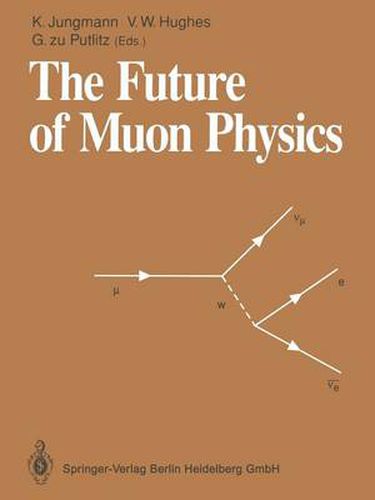Readings Newsletter
Become a Readings Member to make your shopping experience even easier.
Sign in or sign up for free!
You’re not far away from qualifying for FREE standard shipping within Australia
You’ve qualified for FREE standard shipping within Australia
The cart is loading…






This title is printed to order. This book may have been self-published. If so, we cannot guarantee the quality of the content. In the main most books will have gone through the editing process however some may not. We therefore suggest that you be aware of this before ordering this book. If in doubt check either the author or publisher’s details as we are unable to accept any returns unless they are faulty. Please contact us if you have any questions.
This volume comprises a collection of invited papers presented at the interna tional symposium The Future of Muon Physics , May 7-9 1991, at the Ruprecht Karls-Universitat in Heidelberg. In the inspiring atmosphere of the Internationales Wissenschaftsforum researchers working worldwide at universities and at many inter national accelerator centers came together to review the present status of the field and to discuss the future directions in muon physics. The muon, charged lepton of the second generation, was first oberved some sixty years ago~ Despite many efforts since, the reason for its existence still remains a secret to the scientific community challenging both theorists and experimentalists. In modern physics the muon plays a key role in many topics of research. Atomic physics with negative muons provides excellent tests of the theory of quantum electrodynamics and of the electro-weak interaction and probes nuclear properties. The. purely leptonic hydrogen-like muonium atom allows tests of fun damental laws in physics and the determination of precise values for fundamental constants. New measurements of the anomalous magnetic moment of the muon will probe the renormalizability of the weak interaction and will be sensitive to physics beyond the standard model. The muon decay is the most carefully studied weak process. Searches for rare decay modes of muons and for the conversion of muonium to antimuonium examine the lepton number conservation laws and new speculative theories. Nuclear muon capture addresses fundamental questions like tests of the CPT theorem.
$9.00 standard shipping within Australia
FREE standard shipping within Australia for orders over $100.00
Express & International shipping calculated at checkout
This title is printed to order. This book may have been self-published. If so, we cannot guarantee the quality of the content. In the main most books will have gone through the editing process however some may not. We therefore suggest that you be aware of this before ordering this book. If in doubt check either the author or publisher’s details as we are unable to accept any returns unless they are faulty. Please contact us if you have any questions.
This volume comprises a collection of invited papers presented at the interna tional symposium The Future of Muon Physics , May 7-9 1991, at the Ruprecht Karls-Universitat in Heidelberg. In the inspiring atmosphere of the Internationales Wissenschaftsforum researchers working worldwide at universities and at many inter national accelerator centers came together to review the present status of the field and to discuss the future directions in muon physics. The muon, charged lepton of the second generation, was first oberved some sixty years ago~ Despite many efforts since, the reason for its existence still remains a secret to the scientific community challenging both theorists and experimentalists. In modern physics the muon plays a key role in many topics of research. Atomic physics with negative muons provides excellent tests of the theory of quantum electrodynamics and of the electro-weak interaction and probes nuclear properties. The. purely leptonic hydrogen-like muonium atom allows tests of fun damental laws in physics and the determination of precise values for fundamental constants. New measurements of the anomalous magnetic moment of the muon will probe the renormalizability of the weak interaction and will be sensitive to physics beyond the standard model. The muon decay is the most carefully studied weak process. Searches for rare decay modes of muons and for the conversion of muonium to antimuonium examine the lepton number conservation laws and new speculative theories. Nuclear muon capture addresses fundamental questions like tests of the CPT theorem.